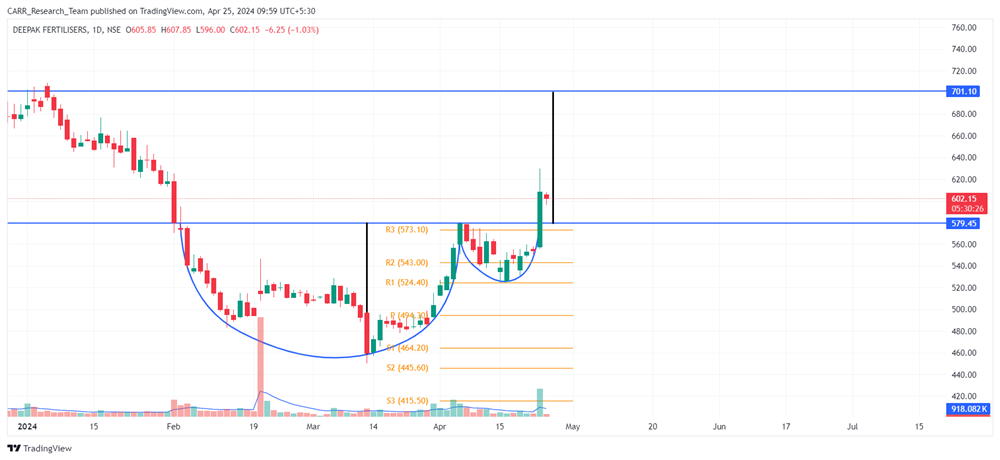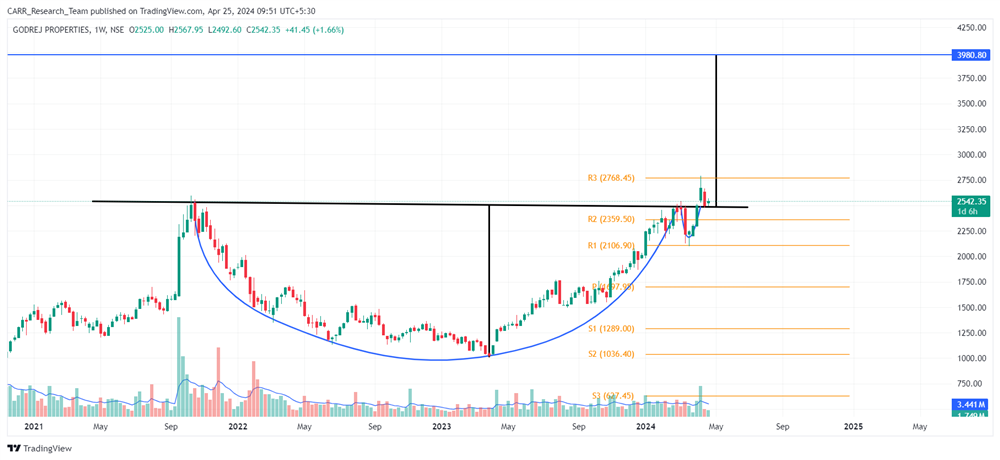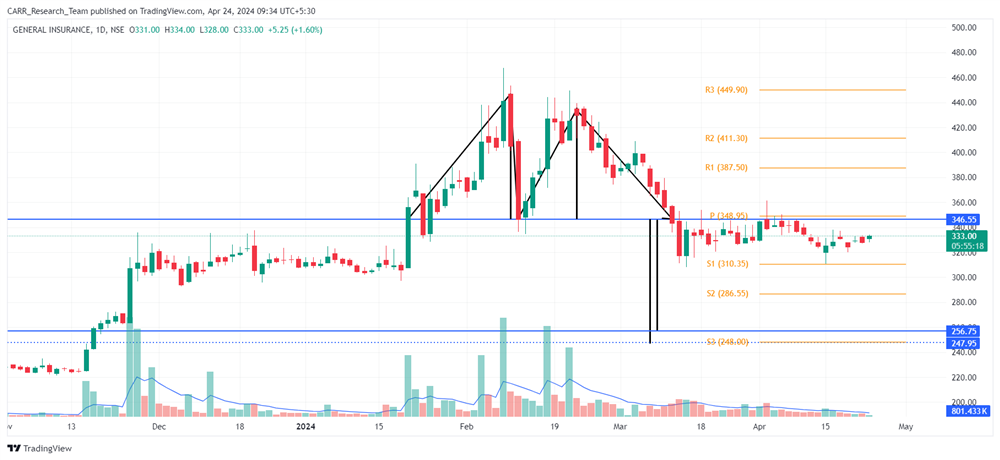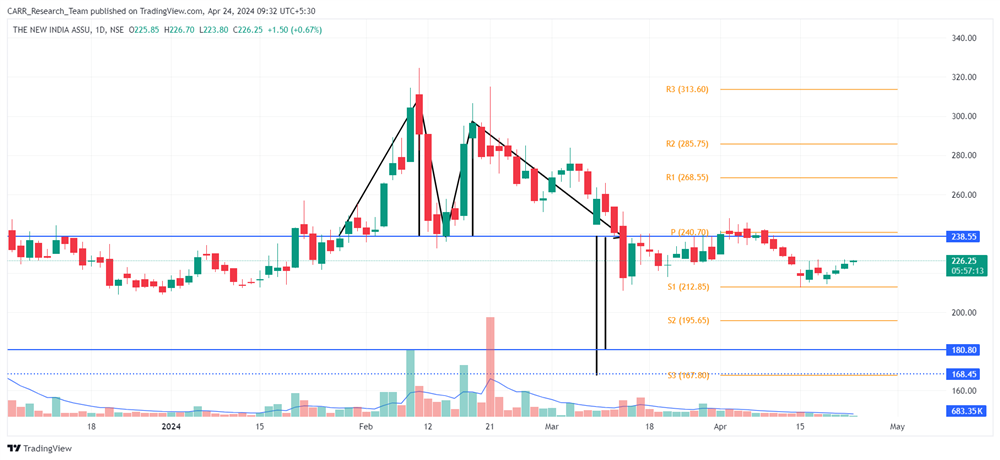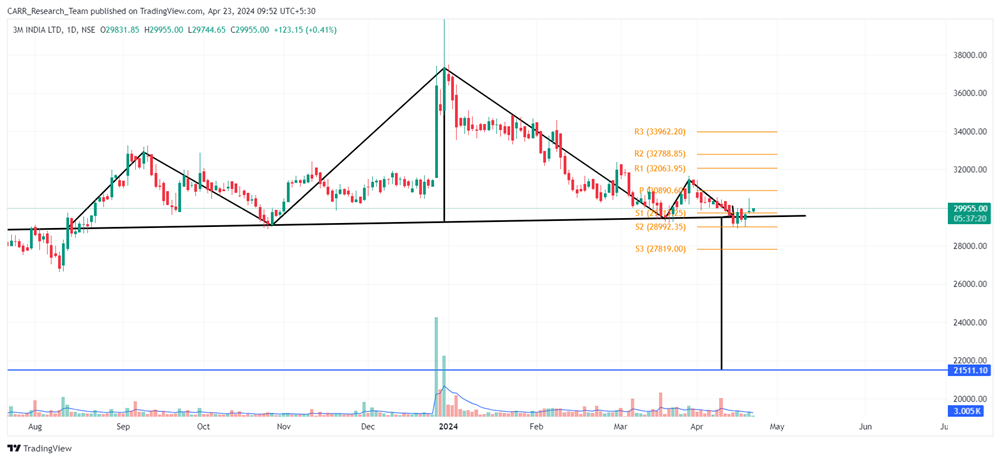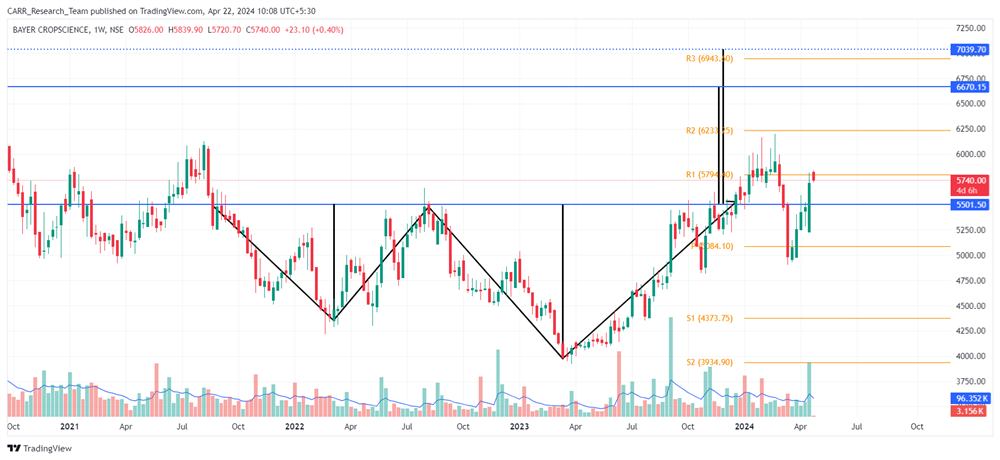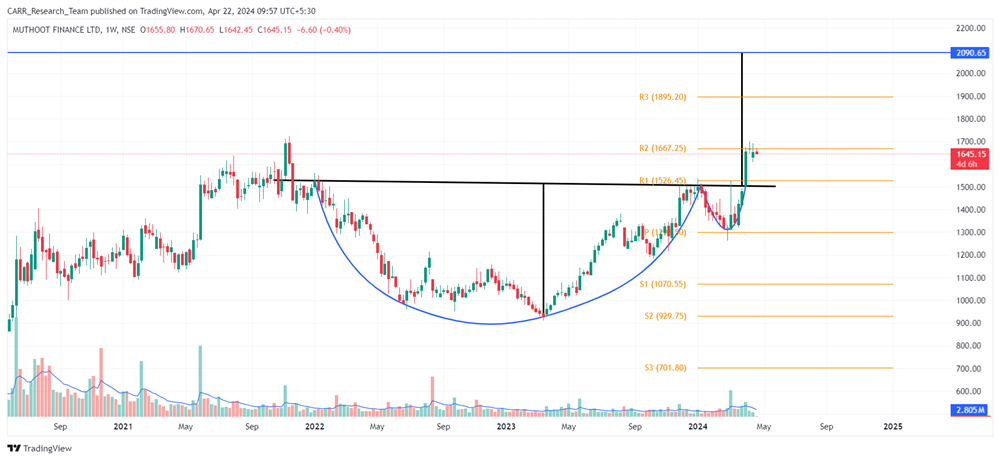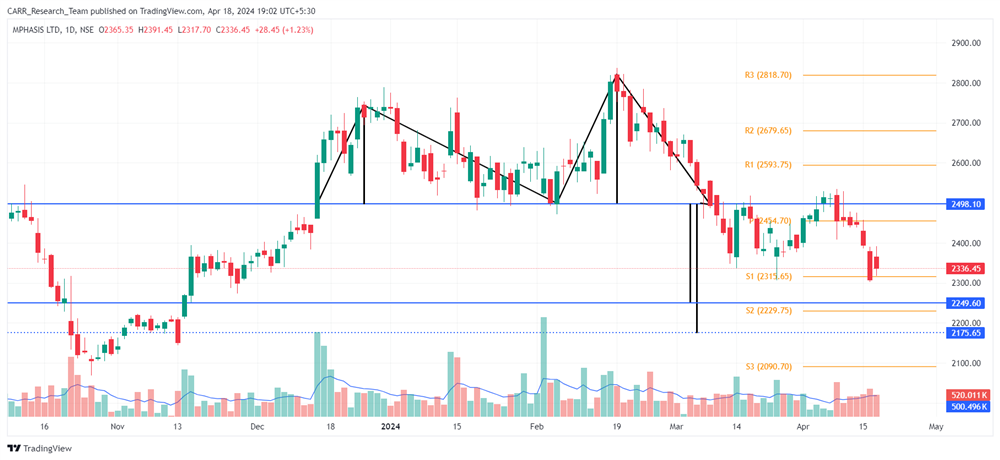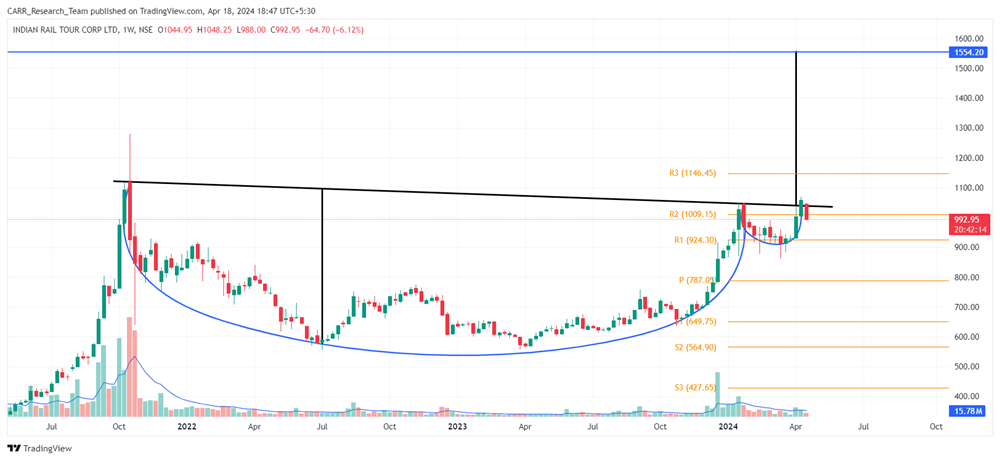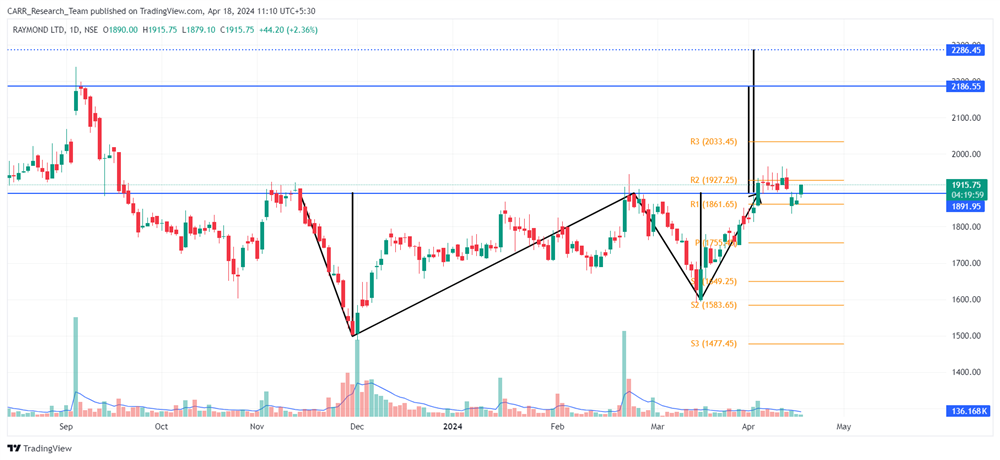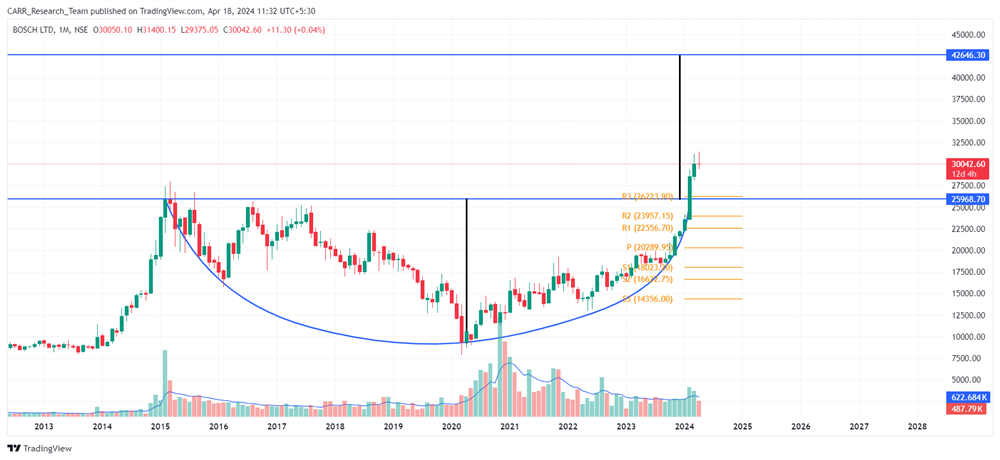Stock name: Aditya Birla Capital Ltd.
Pattern: Cup and handle pattern
Time frame: Weekly
Observation:
Between November 2017 and April 2024, the stock has formed a cup and handle pattern on its weekly chart. In April 2024, it broke out from this pattern, supported by substantial trading volume and a bullish MACD indicator. Following the breakout, the stock is trending upwards. Technical analysis suggests that if the stock sustains its current momentum, it may ascend further.

You may add this to your watch list to understand further price action.
Disclaimer: This analysis is purely for educational purpose and does not contain any recommendation. Please consult your financial advisor before taking any financial decision.

Stock name: Aditya Birla Fashion and Retail Ltd.
Pattern: Double bottom pattern
Time frame: Weekly
Observation:
Since October 2022, the stock has experienced a decline, followed by a period of consolidation leading to the formation of a double bottom pattern on its weekly chart. April 2024 witnessed a breakout from this pattern, backed by higher-than-average trading volume and a bullish MACD indicator. Additionally, the RSI indicator for the stock is presently at a favourable level. Based on technical analysis, if the current momentum persists, the stock may ascend further.

You may add this to your watch list to understand further price action.
Disclaimer: This analysis is purely for educational purpose and does not contain any recommendation. Please consult your financial advisor before taking any financial decision.
News for the day:
- Tata Sons has acquired Temasek's 10% stake in Tata Play, India's leading DTH firm, for Rs 835 crore. This increases Tata Sons' ownership to 70%, aligning with its focus on media and entertainment. Discussions are ongoing with Walt Disney, the minority stakeholder, regarding their exit from the company.
- Reliance Industries has bought 2 million barrels of Canadian crude from Shell for July delivery via Canada's new Trans Mountain pipeline. This marks Reliance's first purchase from the pipeline, part of a growing trend among Asian refiners. The deal, at a $6 per barrel discount to September ICE Brent, reflects efforts to meet rising Asian demand for Canadian crude.
- JNK India shares debuted on the NSE and BSE with a 50% premium over the issue price, showcasing high market demand. Specializing in heating equipment for the oil & gas sector, the company holds a robust order book and strong market leadership. With a solid financial track record and expansion plans, JNK India is poised for substantial growth amid favourable prospects in India's oil & gas and hydrogen sectors.




